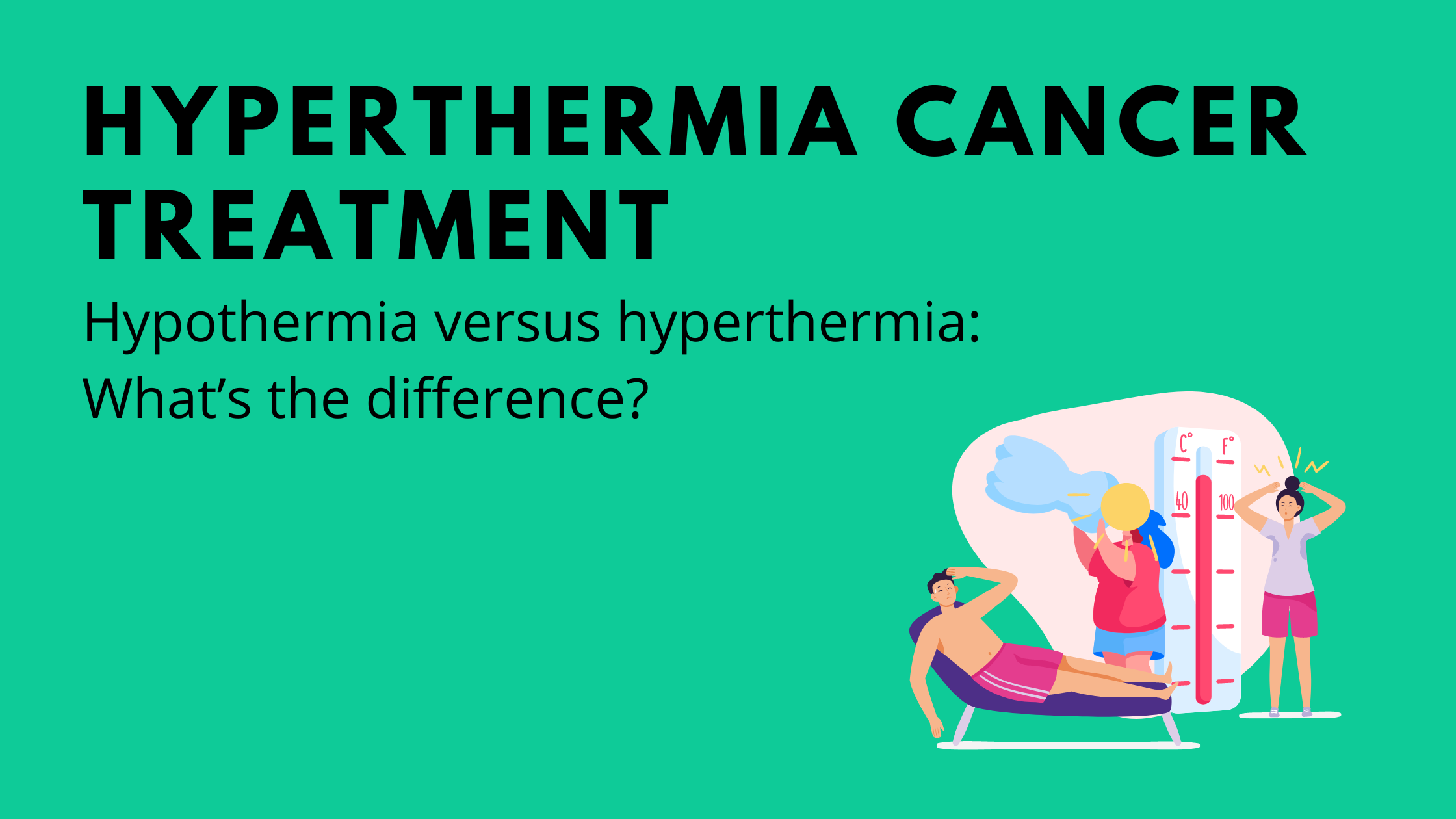Every day, new cancer treatments emerge. Many of these new treatments could be standalone therapy for cancer, while others aim to help other cancer treatments work more effectively.
But what if something as simple as temperature could help in the treatment of cancer? It turns out, researchers have explored the use of heat to treat cancer and, more commonly, improve the effectiveness of cancer treatments. Its called hyperthermia treatment
Keep reading to learn more about how temperature could help treat cancer.

Hypothermia versus hyperthermia: What’s the difference?
You may have heard either of these words before. But what do they mean?
Hyperthermia refers to an abnormally high body temperature, often the result of regulatory mechanisms in the body not working correctly.
Hypothermia is the exact opposite, and refers to body temperature that is too low.
While both can be dangerous, doctors have sought ways to use hyperthermia, specifically, in a controlled way to treat cancer.
How does hyperthermia work for cancer treatment?
Hyperthermia treatment is a therapeutic approach that has shown promise for cancer treatment in recent years. It works by applying the use of heat to destroy cancer cells. Heat can affect changes in and around cells at a number of levels. For example, it can cut off oxygen supply or even make the environment around cancer cells more hostile. These changes can make it easier for other therapeutics (such as chemotherapy) to destroy cancer cells.
There are different ways to produce heat for a therapeutic effect, and they generally tend to focus on local, regional, or whole body approaches. Each approach has different methods for targeting the body in different ways.
Local hyperthermia treatment
Local treatments are focused on a very specific area of the body to produce an effect on a tumor. A doctor may use radio waves, lasers, or even an ultrasound to produce frequencies that are high enough to generate heat energy at the local target.
Radio wave treatment, or radiofrequency ablation (RFA), is the most common approach. To administer radio waves, a doctor guides a needle into the specific area of the body and then administers the correct frequency. RFA treatment can be done as an outpatient procedure, and can be an option for those unwilling or unable to undergo surgery.
RFA has been used and studied for a range of cancers, including pancreatic, breast, and non-small cell lung cancer, to name a few, all with positive results.
Research also suggests that repeated exposure to this treatment could generate a positive effect.
Regional hyperthermia treatment
Moving away from a specific location, regional hypothermia treatment targets a broader area of the body, such as an organ.
Common approaches to regional hyperthermia treatment include the heating of fluids before administering them, such as heating chemotherapy drugs up prior to them being delivered in the bloodstream.
One technique, called isolation perfusion, isolates blood from a specific area, draws it from the body, heats the blood, and returns it to the body along with chemotherapy.
This approach is often used in conjunction with other therapies (such as chemotherapy). Unlike RFA or other local hyperthermia treatments, perfusion techniques don’t produce as much heat. It might be enough to damage cells, but not enough to destroy them, so treatments like chemotherapy are needed to maximize benefit.
Whole body heating
Sometimes, cancers spread. They don’t stay localized to any specific area, which can make them more difficult to treat. However, there are ways of using hyperthermia treatment to target the whole body in an attempt to treat these cancers.
Whole body methods include raising the body temperature by wrapping someone in thermal blankets, putting them in a hot room, or having them soak in warm water. For some methods, people may be given anesthesia to help them relax.
The idea behind whole body heating is that doing so could induce a “fever-like” state. When we get a fever, it can signal to the immune system that more defenses are needed. By activating the immune system, it could help increase the potency of other cancer treatments.
Is hyperthermia treatment effective?
While researchers are constantly searching for new ways to improve hyperthermia treatment techniques and reduce risks, hyperthermia treatment has been consistently effective at shrinking tumors and improving the effectiveness of chemotherapy and radiation treatments.
What are the risks of hyperthermia treatment?
One particularly noteworthy risk of hyperthermia treatment is that heat can damage cells. Any cells, in fact. While heat can be used to kill cancer cells, it also puts other, healthy cells, at risk. Sort of like chemotherapy, which, while destroying cancer cells, can destroy a lot of healthy cells in the process. That’s why it’s important to have these procedures done by someone with extensive experience performing hyperthermia treatments.
That’s also why hyperthermia treatment is more often used in conjunction with other therapies, so that lower temperatures can be used.
If you’re interested in learning more about hyperthermia therapy, talk to your doctor.
